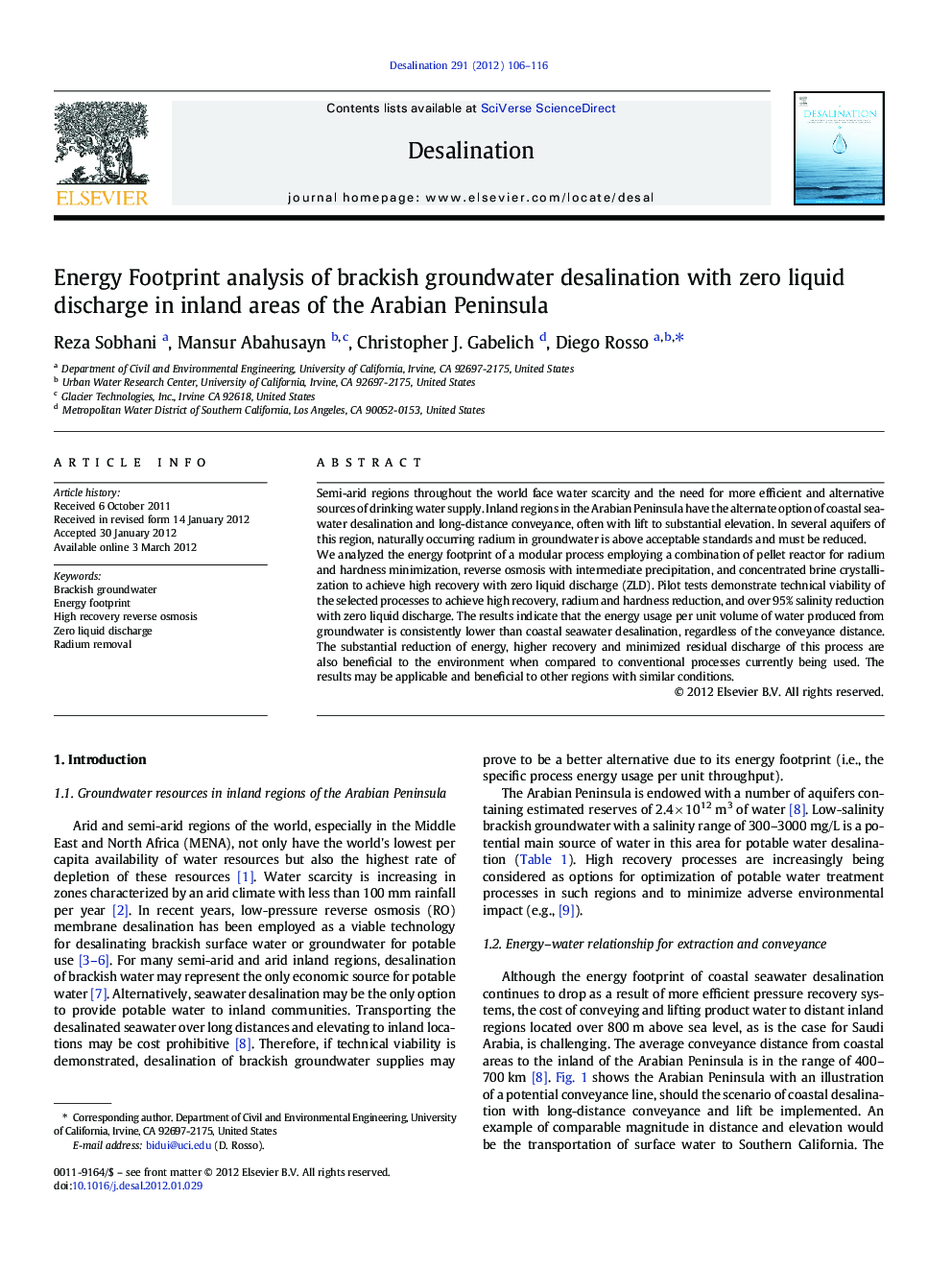| Article ID | Journal | Published Year | Pages | File Type |
|---|---|---|---|---|
| 624254 | Desalination | 2012 | 11 Pages |
Semi-arid regions throughout the world face water scarcity and the need for more efficient and alternative sources of drinking water supply. Inland regions in the Arabian Peninsula have the alternate option of coastal seawater desalination and long-distance conveyance, often with lift to substantial elevation. In several aquifers of this region, naturally occurring radium in groundwater is above acceptable standards and must be reduced.We analyzed the energy footprint of a modular process employing a combination of pellet reactor for radium and hardness minimization, reverse osmosis with intermediate precipitation, and concentrated brine crystallization to achieve high recovery with zero liquid discharge (ZLD). Pilot tests demonstrate technical viability of the selected processes to achieve high recovery, radium and hardness reduction, and over 95% salinity reduction with zero liquid discharge. The results indicate that the energy usage per unit volume of water produced from groundwater is consistently lower than coastal seawater desalination, regardless of the conveyance distance. The substantial reduction of energy, higher recovery and minimized residual discharge of this process are also beneficial to the environment when compared to conventional processes currently being used. The results may be applicable and beneficial to other regions with similar conditions.
► High-recovery groundwater desalination is key to inland water supply for arid areas. ► Coastal desalination processes need substantial lift and conveyance to inland areas. ► Inland groundwater desalination has lower energy footprint than coastal processes. ► Brine crystallization shifts concentrate from costly byproduct to mineable commodity.
